Related Research Articles
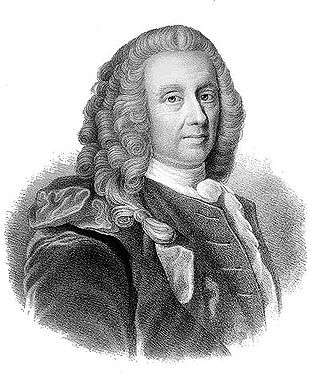
Ludvig Holberg, Baron of Holberg was a writer, essayist, philosopher, historian and playwright born in Bergen, Norway, during the time of the Dano–Norwegian dual monarchy. He was influenced by Humanism, the Enlightenment and the Baroque. Holberg is considered the founder of modern Danish and Norwegian literature. He was also a prominent Neo-Latin author, known across Europe for his writing. He is best known for the comedies he wrote in 1722–1723 for the Lille Grønnegade Theatre in Copenhagen. Holberg's works about natural and common law were widely read by many Danish law students over two hundred years, from 1736 to 1936.

The Paus family is a prominent Norwegian family with a long history of involvement in the clergy, nobility, industry, and the arts. The family first emerged as members of the elite of 16th-century Oslo and, for centuries, belonged to Norway's "aristocracy of officials," especially in the clergy and legal professions in Upper Telemark. Later generations became involved in shipping, steel, and banking. The family is particularly known for its close association with Henrik Ibsen, and for modern members like the singer Ole Paus.
Advowson or patronage is the right in English law of a patron (avowee) to present to the diocesan bishop a nominee for appointment to a vacant ecclesiastical benefice or church living, a process known as presentation.

The Tithe War was a campaign of mainly nonviolent civil disobedience, punctuated by sporadic violent episodes, in Ireland between 1830 and 1836 in reaction to the enforcement of tithes on the Roman Catholic majority for the upkeep of the established state church, the Church of Ireland. Tithes were payable in cash or kind and payment was compulsory, irrespective of an individual's religious adherence.
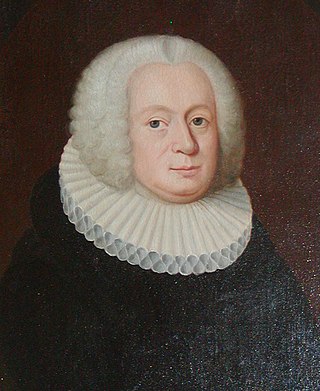
Erik Ludvigsen Pontoppidan was a Danish author, a Lutheran bishop of the Church of Norway, a historian, and an antiquarian. His Catechism of the Church of Denmark heavily influenced Danish and Norwegian religious thought and practice for roughly the next 200 years after its 1737 publication.
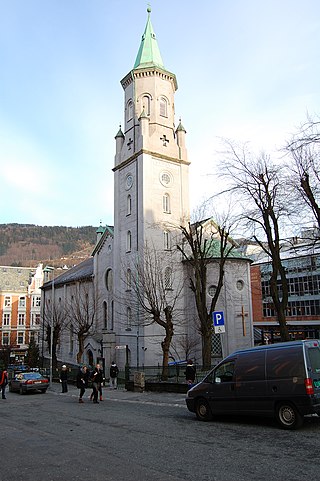
The Catholic Church in Norway is part of the worldwide Catholic Church. As of May 2014, there were over 151,000 registered Catholics in Norway. It is claimed there are many Catholics who are not registered with their personal identification number and who are not reported by the local church; the full number may be as high as 230,000, 70% of whom were born abroad. That constitutes about 5% of the population, making Norway the most Catholic country in Nordic Europe.
The Manor of Rivington at Rivington in Lancashire, England was the past feudal means of control over land with manorial rights above and below ground. The manor history commences 1212 when the Pilkington family owned six oxgangs of land. Records are within a book Leverhulme sponsored, authored by William Fergusson Irvine using the same sources as an earlier work by Harland, the antiquarian who had inspected the Rivington Deeds and Documents, at Rivingon Hall in 1864. The manor was divided in moieties and in the 16th century the Pilkingtons of Rivington Hall owned a 5/8 share, the Cromptons who later occupied the Hall are reputed to have sold their share to William Hesketh Lever in 1900. Lever in turn agreed compensation for the majority of his freehold at Rivington from the Liverpool water company through the Liverpool Corporation Act 1902, the act makes no mention of the manor and there is no record of any later sale of manorial rights by Leverhulme or his heirs. Other owners of shares included a quarter owned in the past by the Lathoms of Irlam and an eighth owned by the Shaw family. The manor was not voluntarily registered under the Land Registration Act 2002 and resultingly no reference is made to it in modern title deeds. There are no manorial records at the National Archive. Leverhulme was the last owner of the 5/8 share, then a local man, now deceased held the 1/8 share transferred from the Cunliffe Shaws and his records are held at Bolton archives. The 1/4 share owner is untraced. United Utilities claims that the Manor is extinguished since 1902.
A rector is, in an ecclesiastical sense, a cleric who functions as an administrative leader in some Christian denominations. In contrast, a vicar is also a cleric but functions as an assistant and representative of an administrative leader.

Landvik Church is a parish church of the Church of Norway in Grimstad Municipality in Agder county, Norway. It is just south of the village of Roresand in the Landvik area. It is the church for the Grimstad parish which is part of the Vest-Nedenes prosti (deanery) in the Diocese of Agder og Telemark. The white, wooden church was built in a cruciform design in 1824 using plans drawn up by an unknown architect. The church seats about 400 people.

Fåberg Church is a parish church of the Church of Norway in Lillehammer Municipality in Innlandet county, Norway. It is located in the village of Fåberg. It is the church for the Fåberg parish which is part of the Sør-Gudbrandsdal prosti (deanery) in the Diocese of Hamar. The red, wooden church was built in a cruciform design in 1727 using plans drawn up by the architect Svend Tråseth. The church seats about 292 people.

Gjøvdal Church is a parish church of the Church of Norway in Åmli Municipality in Agder county, Norway. It is located in the village of Askland in the Gjøvdal valley. It is the church for the Gjøvdal parish which is part of the Aust-Nedenes prosti (deanery) in the Diocese of Agder og Telemark. The white, wooden church was built in a long church design in 1803 using plans drawn up by the architect Gjermund Gunnarson Veum. The church seats about 200 people.
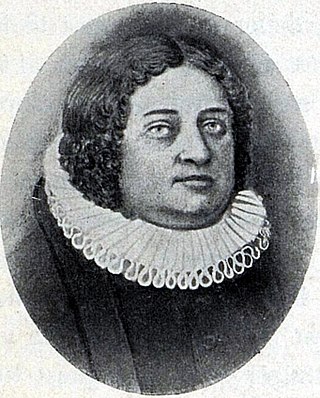
Anders Daae was a Norwegian priest and landowner.
Espe is a manor house and estate located at Boeslunde, between Korsør and Skælskør, Slagelse Municipality, some 100 kilometres southwest of Copenhagen. Espe has been listed on the Danish registry of protected buildings and places since 1918. The main building dates to the 18th century but was adapted to the Late Neoclassical style in 1848. The manor and estate has been owned by members of the Moltke family since 1810.
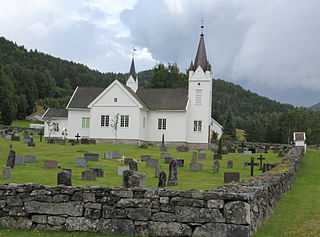
Nissedal Church is a parish church of the Church of Norway in Nissedal Municipality in Telemark county, Norway. It is located in the village of Kyrkjebygda, on the east shore of the lake Nisser. It is one of the churches for the Nissedal parish which is part of the Øvre Telemark prosti (deanery) in the Diocese of Agder og Telemark. The white, wooden church was built in a cruciform design in 1764 using plans drawn up by an unknown architect. The church seats about 270 people.
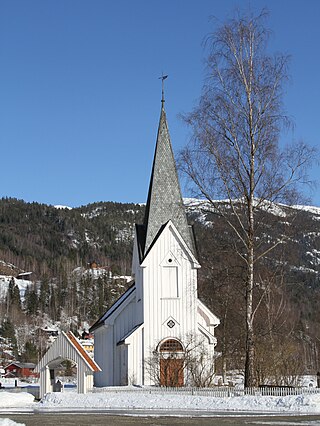
Flatdal Church is a parish church of the Church of Norway in Seljord Municipality in Telemark county, Norway. It is located in the village of Flatdal. It is one of the churches for the Seljord parish which is part of the Øvre Telemark prosti (deanery) in the Diocese of Agder og Telemark. The white, wooden church was built in a long church design in 1654 using plans drawn up by an unknown architect. The church seats about 160 people.
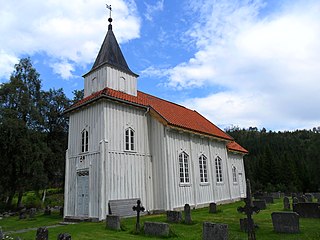
Høydalsmo Church is a parish church of the Church of Norway in Tokke Municipality in Telemark county, Norway. It is located in the village of Høydalsmo. It is one of the churches for the Høydalsmo og Lårdal parish which is part of the Øvre Telemark prosti (deanery) in the Diocese of Agder og Telemark. The white, wooden church was built in a long church design in 1747 using plans drawn up by an unknown architect. The church seats about 60 people.
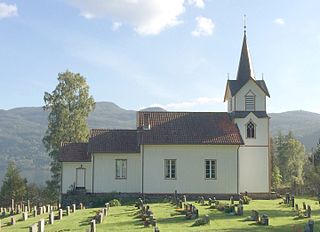
Lårdal Church is a parish church of the Church of Norway in Tokke Municipality in Telemark county, Norway. It is located in the village of Lårdal. It is one of the churches for the Høydalsmo og Lårdal parish which is part of the Øvre Telemark prosti (deanery) in the Diocese of Agder og Telemark. The white, wooden church was built in a long church design in 1831 using plans drawn up by the architect Hans Linstow. The church seats about 120 people.

Sannidal Church is a parish church of the Church of Norway in Kragerø Municipality in Telemark county, Norway. It is located in the village of Sannidal. It is the church for the Sannidal parish which is part of the Bamble prosti (deanery) in the Diocese of Agder og Telemark. The white, wooden church was built in a cruciform design in 1772 using plans drawn up by an unknown architect. The church seats about 330 people.

Solum Church is a parish church of the Church of Norway in Skien Municipality in Telemark county, Norway. It is located in the village of Solum, just west of the town of Skien. It is one of the churches for the Kilebygda og Solum parish which is part of the Skien prosti (deanery) in the Diocese of Agder og Telemark. The white, wooden church was built in a long church design in 1766 by the builder Joen Jacobsen. The church seats about 205 people.
Peder Hansson Paus was a Norwegian lawyer and government official who served as governor and district judge—i.e. the region's foremost government official—of Upper Telemark from 1723 to 1751. He was also known for authoring a cultural and historical description of the district and a glossary of Telemark dialect in 1743. Besides his official duties, he engaged in personal business ventures, including interests in mining.
References
- 1 2 3 4 5 6 Sandvik, Gudmund (1987). "Salet av landskyrkjene i Sør-Noreg i 1720-åra i perspektiv". Kyrkja i lokalsamfunnet : om kyrkjebygningar som historisk kjelde : ei artikkelsamling (in Norwegian). Kristiansand, Norge: Nettbiblioteket. ISBN 8271171941 . Retrieved 2022-01-29.
- 1 2 3 4 5 "Kirkesalget i 1720-åra". Lokal-Historie-Wiki (in Norwegian). Retrieved 2022-01-29.
- 1 2 3 Mykland, Liv (1976). Guds hus under hammeren. En studie i kirkesalget i Norge i 1720-årene (Master's thesis) (in Norwegian). University of Bergen.
- ↑ "Price calculator". Norges Bank (in Norwegian). Retrieved 2022-01-29.